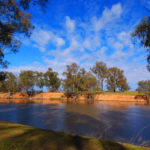
Home Drought
Drought
With government water buybacks hanging over the market, investors have been striking early to secure entitlements before prices inevitably rise.
The emerging markets vehicle has received backing from Schroders, KfW, British International Investment and the Nordic Development Fund.
The ABARES annual conference was abuzz with talk of better trade relations and water markets trading, but don’t mention EU-style farm subsidies to Australian policy makers.
Water entitlement prices fell from all-time highs in February 2023 to near-A$0 in June, before recovering some ground, writes Aither's Ben Williams.
Levelling out farmland prices, higher interest rates and widespread drought present prospective buyers with plenty to consider.
The Australian government’s proposed intervention in Murray-Darling Basin water markets should be good news for investors in terms of values – but it may come with additional scrutiny should weather conditions get drier.
The emergence of frontrunner Javier Milei is a microcosm of the country’s longstanding desire to break free of its shackles as well as the all too familiar upheavals that have been its undoing.
A confluence of events could lead to increased food scarcity in 2023, with knock-on effects for prices and an increase in the attractiveness of controlled environment production in hot countries.
After several years of drought and record-high water prices, the outlook for irrigators in the Murray-Darling basin over the next 12 months is positive, say Aither's Chris Olszak and Erin Smith.
Following fires and drought, the covid-19 pandemic presented a new challenge for Australia’s farmers, but financial returns for investors have remained steady and attractive.













